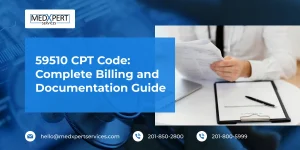Do you struggle with DME billing to Medicare? Are your claims getting denied frequently every month? Medicare covers over 60 million Americans for DME needs. DME suppliers face a 15-20% claim denial rate annually. Wrong billing costs suppliers thousands of dollars each year. Understanding proper billing guidelines helps you get paid faster. Good billing practices can reduce your denial rates significantly.
DME stands for Durable Medical Equipment used by patients. Medicare Part B covers 80% of approved DME costs. Suppliers must meet specific requirements to bill Medicare successfully. The DME claim submission process has strict rules to follow. Common billing errors include wrong codes and missing documentation. Medicare processes over 5 million DME claims each month nationwide. Proper claim submission ensures faster payment processing for suppliers.
This guide explains how to bill DME claims to Medicare. We cover the complete Medicare DME billing process step-by-step. You will learn DME claim requirements for Medicare coverage. Common Medicare DME billing errors are explained with solutions. DME billing guidelines for Medicare are simplified for easy understanding. Medicare DME claim submission steps are broken down clearly.
Understanding Medicare DME Basics
Medicare DME covers medical equipment for home use. Suppliers must understand what Medicare covers. Following Medicare rules prevents claim denials.
What is DME
DME is durable medical equipment for patient use. Equipment must withstand repeated use over time. Items must always serve a medical purpose. Equipment is used in patient home settings. Medicare covers wheelchairs, walkers, hospital beds, and oxygen equipment. Items must be prescribed by a doctor.
Medicare DME Coverage Requirements
The doctor must order DME for a medical condition. Equipment must be medically necessary for the patient. Supplier must be Medicare-enrolled and accredited. Patient must have Medicare Part B coverage. Prior authorization is needed for certain expensive items. Face-to-face visit required before DME order.
DME Supplier Enrollment
Suppliers must enroll in the Medicare program first. Complete the DMEPOS supplier application with CMS accurately. Obtain the National Supplier Clearinghouse number for billing. Get accredited by an approved accreditation organization always. Maintain a surety bond as required by Medicare.
DME Billing Guidelines for Medicare
Medicare has specific billing guidelines for DME suppliers. Understanding these rules ensures successful claim submission.
HCPCS Coding Requirements
Use correct HCPCS codes for all equipment. E codes cover durable medical equipment items. K codes for specific DME accessories and supplies. Modifiers indicate rental or purchase status. NU modifier for new equipment purchased. RR modifier for rental equipment billed. Each item needs an accurate code selection always.
Documentation Requirements
| Document Type | What’s Needed | When Required |
| Prescription | Doctor’s order with diagnosis | Before delivery |
| Medical Records | Proof of medical necessity | With the initial claim |
| Delivery Receipt | Patient signature and date | After delivery |
| ABN Form | If Medicare may not cover | Before delivery |
Prior Authorization Process
Check if the item requires prior authorization first. Submit an authorization request before delivering equipment. Include all required clinical documentation with the request. Wait for approval before providing equipment to the patient. Keep the authorization number for claim submission later.
Medicare DME Claim Submission Steps
Submit claims electronically through an approved clearinghouse or portal. Follow the step-by-step process for successful claim submission.
Step 1: Verify Patient Eligibility
Check the patient’s Medicare eligibility before delivery always. Verify Part B coverage is active currently. Confirm the patient has met the deductible for the year. Check for secondary insurance coverage if applicable. Verify patient address matches Medicare records exactly.
Step 2: Obtain Proper Documentation
Get a detailed written order from the treating physician. Ensure the face-to-face visit is documented within the timeframe. Collect medical records supporting medical necessity clearly. Obtain the patient’s signature on the delivery receipt document. Get an Advanced Beneficiary Notice if coverage is uncertain.
Step 3: Submit Claim Electronically
Use correct HCPCS codes for equipment provided. Include all required modifiers on the claim form. Enter dates of service accurately on the claim. Submit the claim within the timely filing limit period. Include the prior authorization number when required. Attach supporting documents as needed for the claim.
Step 4: Track and Follow Up
- Monitor claim status through the Medicare portal regularly
- Follow up on pending claims after two weeks
- Respond quickly to any additional information requests
Common Medicare DME Billing Errors
Many suppliers make preventable billing mistakes regularly. Understanding common errors helps avoid claim denials.
Coding and Modifier Errors
Using the wrong HCPCS codes for the equipment provided. Missing required modifiers on rental equipment claims. Incorrect units of service for billed items. Billing non-covered items to Medicare incorrectly. Unbundling items that should be billed together. Using outdated codes that are no longer valid. These errors cause immediate claim denials.
Documentation Problems
Missing a detailed written order from the treating physician. No face-to-face visit was documented before the DME order. Inadequate medical records supporting medical necessity are shown. Unsigned delivery receipts or missing patient signatures. Expired or outdated prescriptions submitted with claims.
Timely Filing Issues
Claims must be filed within one year. Missing the filing deadline results in claim denial. Track dates of service carefully for timely submission. Submit claims promptly after equipment delivery is completed. Late claims cannot be resubmitted after the deadline. Set up systems to prevent missing filing deadlines.
Preventing DME Billing Denials
Proper processes prevent most billing denials from occurring. Staff training improves billing accuracy significantly over time.
Pre-Delivery Verification
Verify patient eligibility before ordering equipment always. Confirm the item is covered under Medicare benefit rules. Check if prior authorization is required for the item. Obtain all required documentation before the delivery date. Ensure the physician’s order meets Medicare requirements exactly. Pre-verification prevents many denials from happening later.
Staff Training Programs
Train staff on Medicare billing rules regularly. Review common errors and prevention strategies monthly. Update training when Medicare changes rules or policies. Test staff knowledge of billing requirements quarterly. Provide resources for quick reference during work.
Quality Assurance Processes
- Review a random sample of claims before submission
- Audit denied claims to identify error patterns
- Implement corrective actions for recurring problems
Handling Denied Claims
Some claims get denied despite best efforts. Understanding the appeal process helps recover lost revenue. Quick action improves chances of a successful appeal.
Understanding Denial Reasons
Review the denial reason code on the remittance advice. Common reasons include missing documentation or wrong codes. Medical necessity not established with submitted documents. Timely filing limit exceeded for claim submission. Patient is not eligible for coverage on the date.
Appeal Process Steps
Review the claim and the denial reason carefully first. Gather additional documentation supporting medical necessity if needed. Submit an appeal within the timeframe specified on the denial. Include a cover letter explaining why the claim should be paid. Attach all supporting documents with the appeal submission.
Resubmission Guidelines
Correct errors identified in the denial reason code. Add missing documentation to the resubmitted claim carefully. Use correct codes and modifiers on the new submission. Resubmit within the allowed timeframe for corrections only. Track resubmitted claims separately from new claims.
Conclusion
Billing DME claims to Medicare requires knowledge and attention. Understanding DME billing guidelines for Medicare prevents errors. Following the Medicare DME claim submission steps ensures success. Meeting DME claim requirements for Medicare gets claims paid. Avoiding common Medicare DME billing errors improves revenue. The Medicare DME billing process becomes easier with practice. Proper training and systems reduce denials significantly.
FAQs
What is the timely filing limit for Medicare DME claims?
Claims must be filed within one year of the service date. This deadline is strict and cannot be extended. Missing the deadline results in automatic claim denial.
Do all DME items require prior authorization?
No, only certain expensive items require prior authorization. Items like power wheelchairs and oxygen equipment need prior auth. Check Medicare coverage policies for specific item requirements.
How long should DME documentation be kept?
Keep all DME records for at least seven years. Medicare can audit claims up to seven years back. Store documents securely in an organized filing system. Electronic storage is acceptable if properly backed up.
What modifier is used for DME rentals?
The RR modifier indicates rental equipment on claims. This modifier tells Medicare the item is rented, not purchased. Use the NU modifier for newly purchased equipment instead.
What happens if a claim is filed after the deadline?
Late claims are denied and cannot be resubmitted. Medicare will not pay claims filed after one year. No exceptions are made for late filing deadlines. Set up systems to ensure timely claim submission.
















